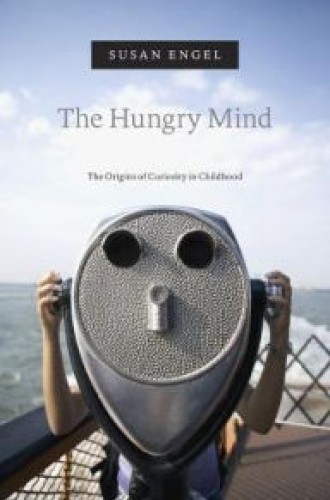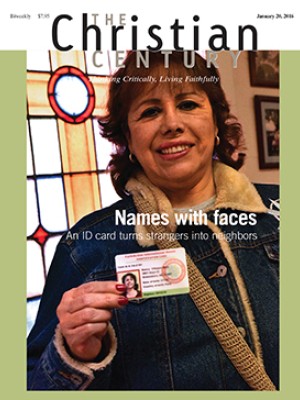The Hungry Mind, by Susan Engel
Children’s curiosity is both a curse and a necessity for religious leaders. What pastor or church school teacher hasn’t cringed when a well-planned children’s lesson goes off on a tangent because of children’s questions? Yet children learn to wonder precisely by asking questions and receiving answers, says Susan Engel, and wondering is an essential disposition for Christian discipleship.
Engel, a developmental psychologist, has spent over a decade studying the origins of children’s curiosity and the relationship between educational systems that teach to the test and a notable decline in children’s expressions of curiosity.
Read our latest issue or browse back issues.
She is particularly interested in “epistemic curiosity,” which she defines as “the urge to know about things that have no obvious or utilitarian function.” Epistemic curiosity is what leads children to the wonder about God and unseen things that constitutes a spiritual life. Engel offers an understanding of what curiosity is and, indirectly, ideas for encouraging curiosity through conversations, classroom activities, and an ethos of congregational inquiry.
The Hungry Mind weaves together stories from Engel’s childhood, data from studies conducted by Engel and others, and scripts from parent-child and student-teacher conversations. Engel uses these elements to identify personal and social circumstances that contribute to the development of curiosity: “emotional daring or openness,” conversations with trusted adults that encourage questioning, adult models of intellectual exploration, opportunities to speculate, encounters with novel and complex ideas, exposure to stories and gossip, the means to forage for information, solitude, and time to explore independently.
Engel’s description of a Japanese teacher who provokes curiosity in her students by coming to class with a paper bag full of surprise items relevant to the day’s lesson is reminiscent of the “paper bag sermon” approach some pastors use with children in worship. Her claim that children’s curiosity is sparked when they have “natural, complicated, and messy places to play” calls to mind the elaborate fantasies developed by my children and their friends in a desolate corner of the schoolyard dubbed “Martianland” by several generations of students. Her description of educational systems that seem to lack the goal of helping children pose questions also rings true for many church school curricula, in which questions are scripted and children are expected to offer predetermined answers to keep the lesson moving in the proper direction.
One of Engel’s most helpful observations is that “curiosity episodes” occur both within planned activities and around the margins of formal instruction. Nurturing spiritual curiosity is not solely a matter finding a good curriculum. For children’s curiosity to grow, teachers should be oriented to the value of informal learning and given permission to go off topic when children’s questions lead away from the lesson but toward another fruitful path to God. Engel found that teachers who offered small suggestions and “smiled and talked in an encouraging manner” reinforced children’s curiosity more than teachers who simply asked questions and then supplied children with the right answers.
I experienced the truth of this observation while teaching a group of five- to seven-year-olds the Bible story of the paralyzed man lowered through the roof. One of the children asked, “Was it hard to get the man up to the roof?” I laid down on the floor and suggested that they try to carry me across the room. As they struggled to lift me, and then to lift one another, they shouted, “This is hard work!” and “Wow! His friends really wanted to help him get well!” This impromptu activity was not in the lesson plan, but it did more to help children explore the story curiously than anything else we did that Sunday morning.
One area of Engel’s research requires careful unpacking if it is to be useful in a religious setting: the idea that gossip is a positive means of nurturing curiosity. She describes gossip as a form of social glue that helps people bond around shared norms. While acknowledging that stories about others can be used as “social weapons,” she contends that children’s curiosity about other people is piqued by “negative anecdotes” in ways that encourage them to acquire necessary information about the world. Many Bible stories—for example, those about David and Bathsheba, Peter denying Jesus, and Mary anointing Jesus’ feet—use negative information to draw readers into the drama associated with being human in a broken world. These stories fall within Engel’s category of gossip. As children explore such stories, their curiosity about the messy details may lend credence to the moral messages attached to these narratives.
Teachers, especially those working in public schools, may resist the negative portrayal of the teaching profession in the chapters titled “Curiosity Goes to School” and “What Fuels Learning.” Although Engel acknowledges the problematic influence of federal and state mandates on classroom culture, she is quick to condemn teachers as the primary agents responsible for quelling curiosity in school-age children.
A more helpful critique would focus on the inappropriate expectations of a society that delegates primary responsibility for children’s holistic and spiritual development to low-paid and volunteer workers without providing sufficient resources, continuing education, and communal support. The attrition of curiosity in children calls not for finger-pointing, but for strong collaborative efforts to reclaim the wonder of childhood as an asset at home, at school, and in congregations.






